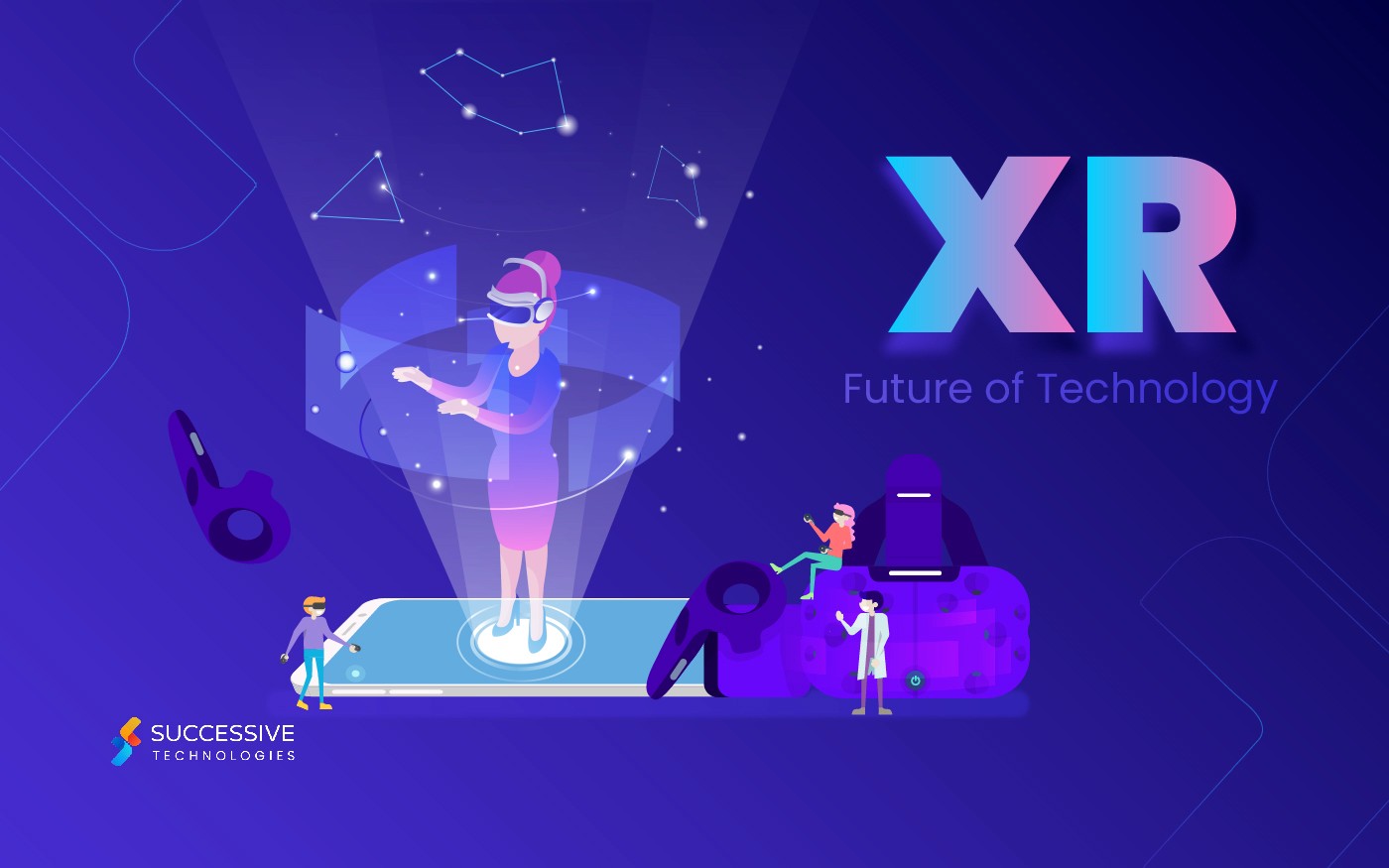
XR (Extended Reality) is a newly added term to the dictionary of technical words. It refers to all real-and-virtual combined environments and human-machine interactions generated by computer technology and wearables. Extended Reality includes all its descriptive forms including Virtual Reality (VR), Augmented Reality (AR), and Mixed Reality (MR). It’s a wide range of immersive tools that use and enhance our natural senses. And, the impact will be a more intuitive relationship between the real and virtual worlds. The concept of Extended Reality has actually been around much longer than most people realize; since Charles Wyckoff filed a patent for an Extended Reality film in the 1960s.
In recently companies have begun to really unlock the potential of the Extended Reality landscape, thanks to the evolving technology we have access too. Advanced smart-phones are capable of tracking everything from eye movement to positioning is paving the way for “AR.” Intelligent sensors and ultra-high-definition lenses are introducing us to new instance of “VR”. Companies are rapidly developing supporting technologies for XR platforms, ranging from high-performance hands-free headsets to AI-enabled tools for capturing the information and translating it into extended reality environments.
The Three Types of Extended Reality (XR)
In currently, there are three forms of extended reality in the marketplace, each defined by the level of interaction between the virtual and real worlds such as:
Augmented Reality (AR)
Augmented Reality is perhaps the best-known of the Extended Reality environments available in today. Augmented Reality expands on the real world by implementing virtual information, objects and data into the world around use. Virtual elements can feature everything from animations and images to text and video streams.
Lately, AR solutions have been growing at a much faster rate than other modes of extended reality, due to their accessibility. AR solutions are frequently implemented into smart-phones, which most consumers have already. This helps to generate very fast adoption of AR tech, because people do not need to purchase additional hardware to access AR.
For instance - AR most people are familiar with is “Pokémon Go,” an app which allows users to hunt specific creatures and see them in the real world through their smart-phone.
Augmented Reality can:
Virtual Reality (VR)
Virtual Reality, is replaces the real world almost entirely, by creating unique, interactive virtual spaces for the users to step into. Unlike with AR, people using VR need specially-created hardware, including headsets (for seeing a virtual space) and sensors or controllers (for interacting with the space). Some devices also need a computer connection. Virtual Reality first rose to fame in the entertainment industry, as a way to immerse gamers in unique experiences powered by their game consoles. In recently, the virtual reality has grown to be a far more diverse technology with various use cases, particularly as the technology becomes more affordable.
Virtual reality can:
Mixed Reality (MR)
Mixed Reality is get start to the little confusing for most people in the XR landscape. Initially, various people assumed “MR” was just an extension of augmented reality. Both technologies mix the real and virtual worlds, after all. Nevertheless, Mixed Reality is a little more complex than this. While augmented reality embeds digital content into the real world, mixed reality actually merges the two environments to produce new visualizations, opportunities, and interactions. With mixed reality, you can have holographic meetings with colleagues and interact with the digital twin of a product for quick innovation. Mixed Reality is still in its early stages, but companies like Microsoft are introducing us to new possibilities all the time.
Mixed reality can:
Future of Extended Reality
The various companies investing in the future of extended reality will need to consider carefully how they can manage issues such as:
Despite a number of possible challenges, demand for Extended Reality is definitely on the rise. Sales for virtual and augmented equipment are set to continue growing strongly over the next upcoming 5years, reaching above 70 million units sold per year in 2025.
Lorem ipsum viverra feugiat. Pellen tesque libero ut justo, ultrices in ligula. Semper at. Lorem ipsum dolor sit amet elit. Non quae, fugiat nihil ad. Lorem ipsum dolor sit amet. Lorem ipsum init dolor sit, amet elit. Dolor ipsum non velit, culpa! elit ut et.
Lorem ipsum dolor sit amet elit. Velit beatae rem ullam dolore nisi esse quasi, sit amet. Lorem ipsum dolor sit amet elit.